The Experiential Trip - Ooty wild walking
**********************************************************************************
Disclaimer: This blog shares personal travel experiences and tips for general informational use. Travel conditions, prices, and regulations may change, and I do not guarantee the accuracy or timeliness of all content. I am not responsible for any issues, losses, or inconveniences arising from reliance on this information.
**********************************************************************************
“… it resembles Switzerland, more than any country of Europe… the hills beautifully wooded and fine strong spring with running water in every valley…” — John Sullivan
If you hear the terms “Switzerland of India” or “Scotland of India” and think of them as marketing gimmicks by the tourism industry, then think again, because the above was quoted by an Englishman who was the founder of the British settlement of Ottacamund. He had set out to explore the Nilgiris to validate the fabulous tales that were circulating. He noted that the weather was healthy and unusually temperate, ideally suited as a “resort for invalids” for soldiers among British ranks. If you ask me, his words still echo after 250 years, and Ooty is popular among Banglorites, Westerners, and for people across India, even so more, it is one of the most sought after weekend destinations in south india. Texture wise its completely different from the more commonly construed south India panorama, i.e. the Heritage temples, the rice fields, the hot and humid climate. Here its mostly cold, dewy, vegetable farming, churches and tea (lots of it).
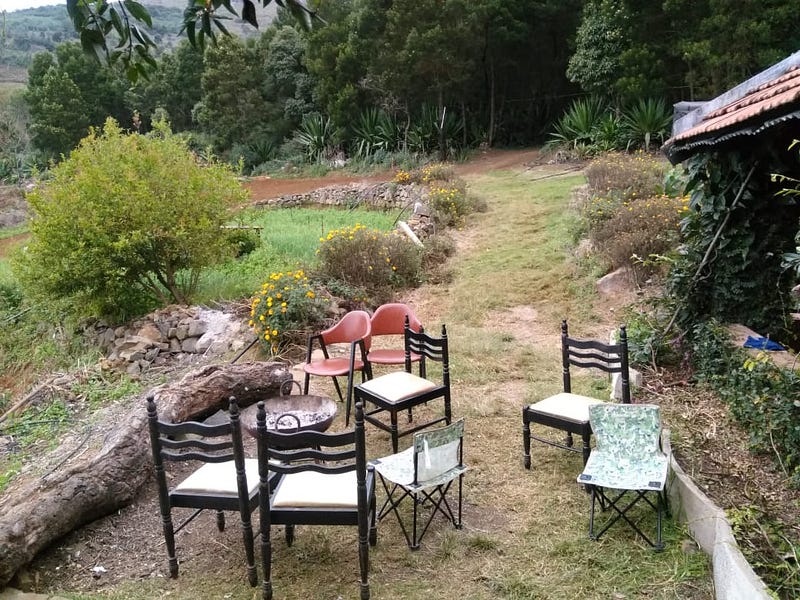
From Bengaluru, towards the bandipur tiger reserve, we start our ascend to Ooty after crossing masinagudi. The route can generate nausea, and you would hope the first settlement that crops after along the way would be start of the town, but it isn’t. Ooty is deeply seated in the Nilgiri range, and only by driving further into the ghats will you finally reach the town famous for its fabled glory. If you leave on a Friday night from Bengaluru, the trip does not seem monotonous, as every few hour there is a change in landscape ( you would have already skipped the monotonous part during the night). We begin by the Bandipur reserve with its plains and grasslands and streams flowing, where you can easily watch Elephants 🐘 and spotted deer 🦌 quenching their thirst. There is the Madumalai forest in the backdrop. Then you ascend on the curves, and quite often then not, the hair pin bends. A layer of cloud hits you on the way up and then you are above it. If the weather is clear, you can see blue skies, else its another layer of clouds above us.
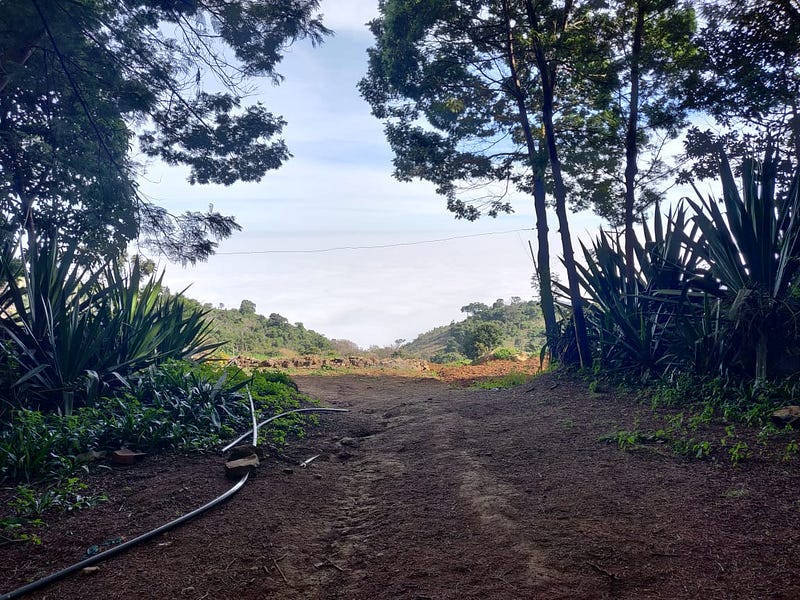
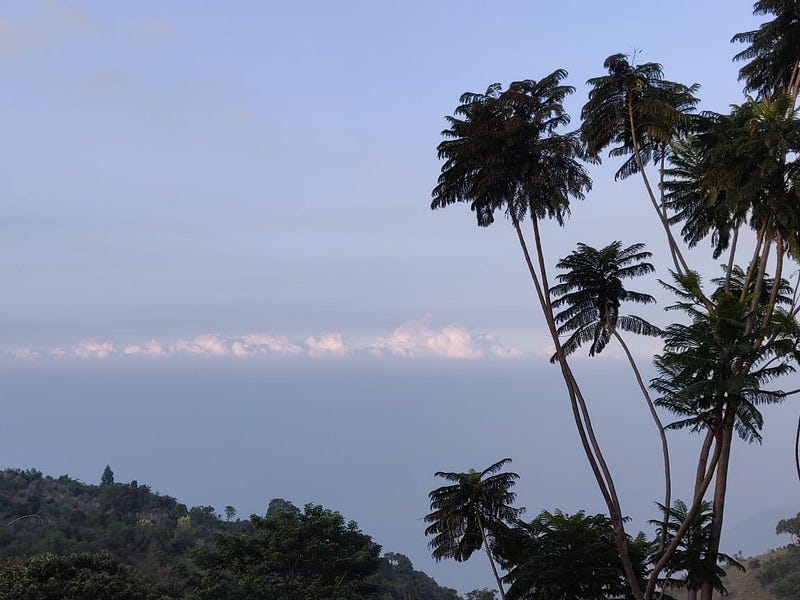

If you plan to visit for more than a couple of days then go straight to connoor first which is some 30 kms from Ooty town. We stayed at De Rock’s homestay near Lamb’s rock point on the Dolphins View Road. The stay was in a small tea estate with few cottages and a restaurant. This was christmas week, so there was some extra preparation for the fest. The place looked chic and had plenty of space to stretch your arms around. We read some bird watching manuals, some history of Filipino revolutions for freedom, browsed through some recipe books. In the outdoors we played cricket on a small lawn around the cottages, watched some exotic birds like the Nilgiri Blue Flycatcher, the hummingbirds, jays and cormorants, apart from the usual Instagram worthy clicks amidst the tea gardens. Sight seeing is totally weather dependent and honestly you will not see much if there is cloud cover below your level. However, there are few waterfalls on the way, where you can dip your feet in therapeutic cold water. The town has attractions like Sims Park and a Tea Factory where you get hands on experience with the Tea making process. The aroma inside the factory can make you high on tea 😆. There is also the Chocolate and oil factory. Oil is extracted from Eucalyptus leaves and forms the base for a number of cosmetic and pharmaceutical products.
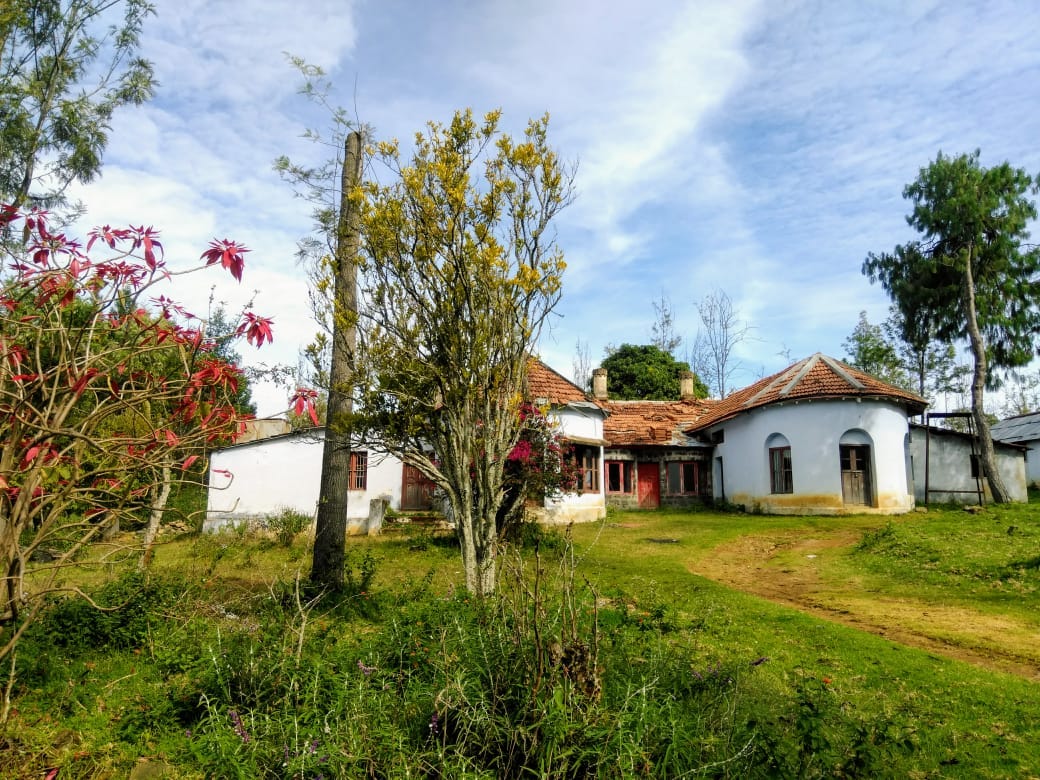
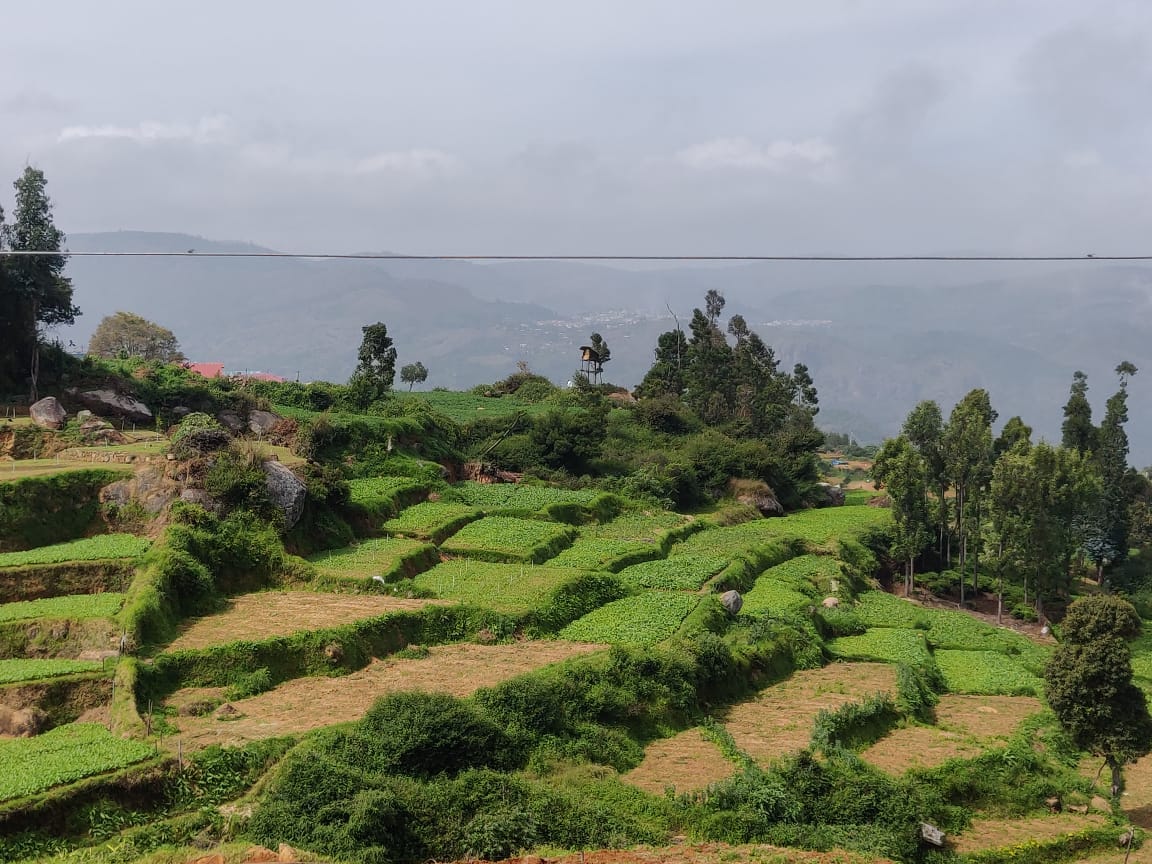
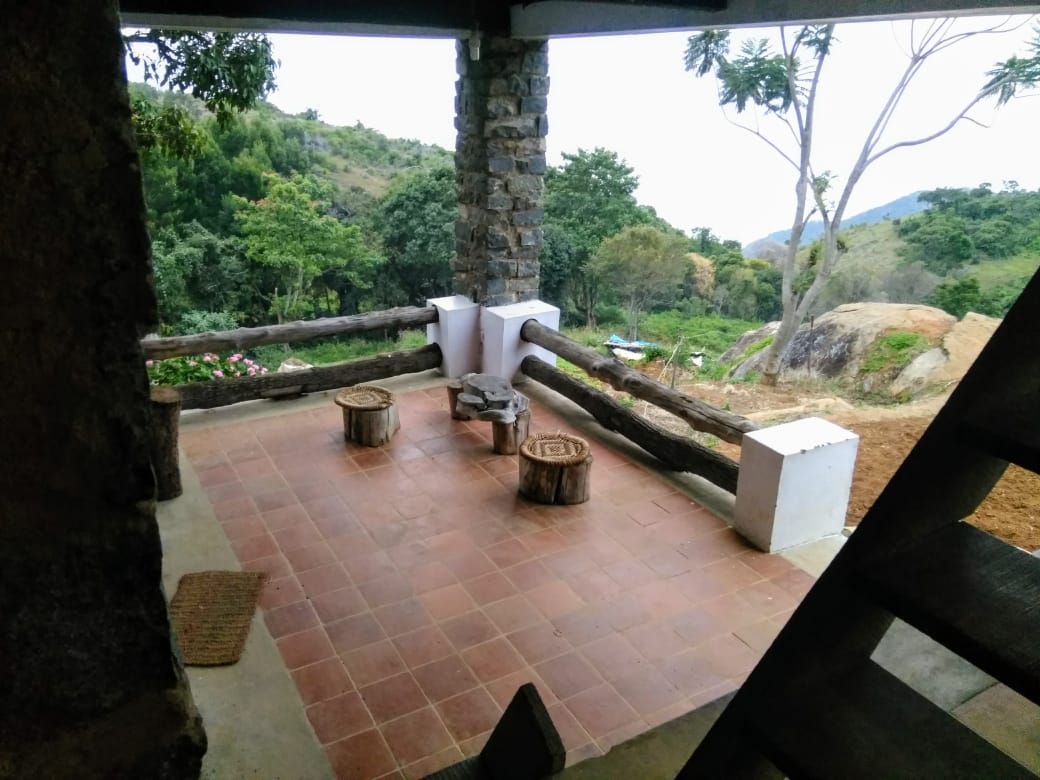
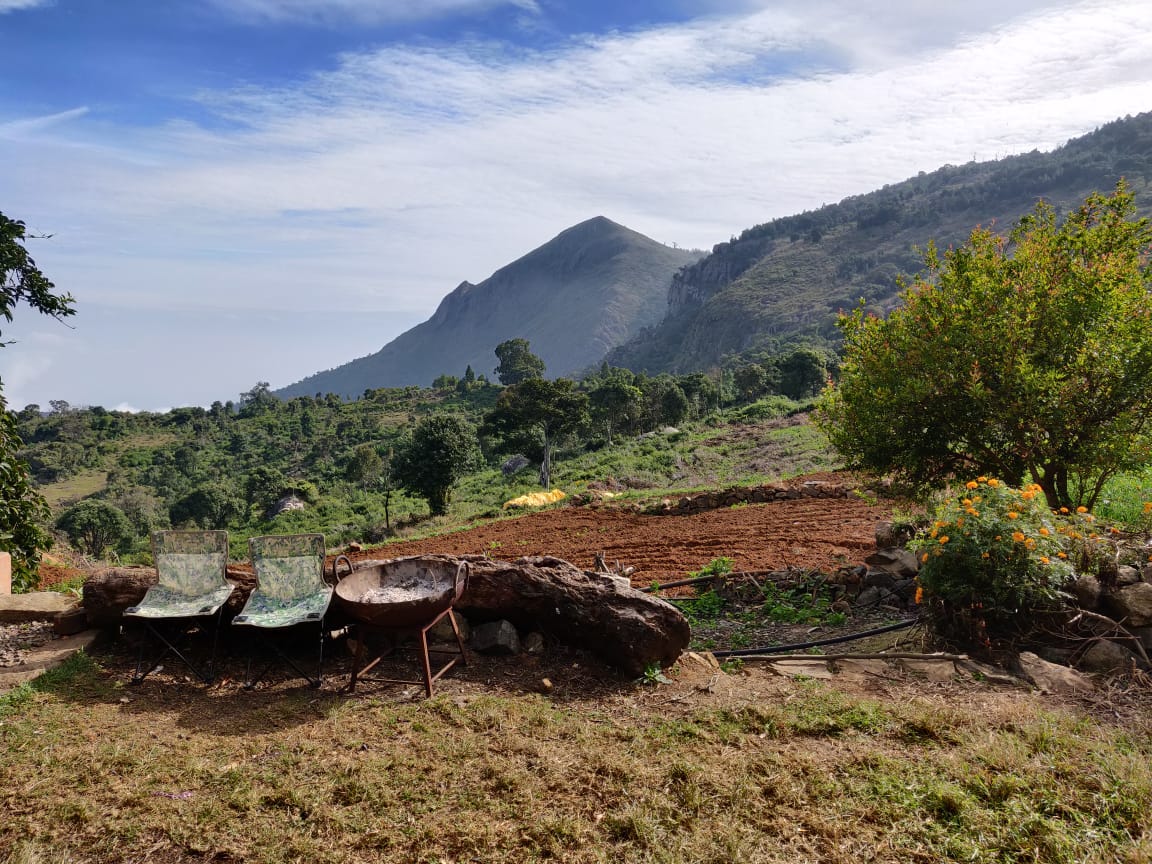
You can visit the Steam Locomotive shed in the evening, and be up close to the coal eating beasts. I have never been inside any kind of a Train Engine, but I am pretty sure none of them are as complicated as the steam engines. There are so many knobs to rotate, levers to pull, indicators to keep watch, electrical switches to adjust. The trains run on meter gauge and together with the Darjeeling Mountain train, are given a UNESCO heritage status. The way this trip should be planned is you reach Mettupalayam and take the NMR Steam locomotive to Connoor, enjoy your site seeing here and then take the Diesel Locomotive to Ooty. The section from Mettupalayam to Cunnoor is much scenic then the rest, unfortunately we didn’t plan this way, so we took the train from Wellington station for Ooty. A steam engine brings the train from Mettupalayam till Wellington, where few more coaches are added and then a Diesel engine pushes the train to Ooty. The train will take you at a descent pace and the old coaches have plenty of open slots for you to poke yourselfs out for snaps. There are few tunnels on this route too apart from the tea gardens and dense pine forests. If you have heard the song “Chaiyya Chaiyya” from A. R. Rahman (once rated among the top 10 most popular songs by a BBC poll), the song was shot on top of this train.
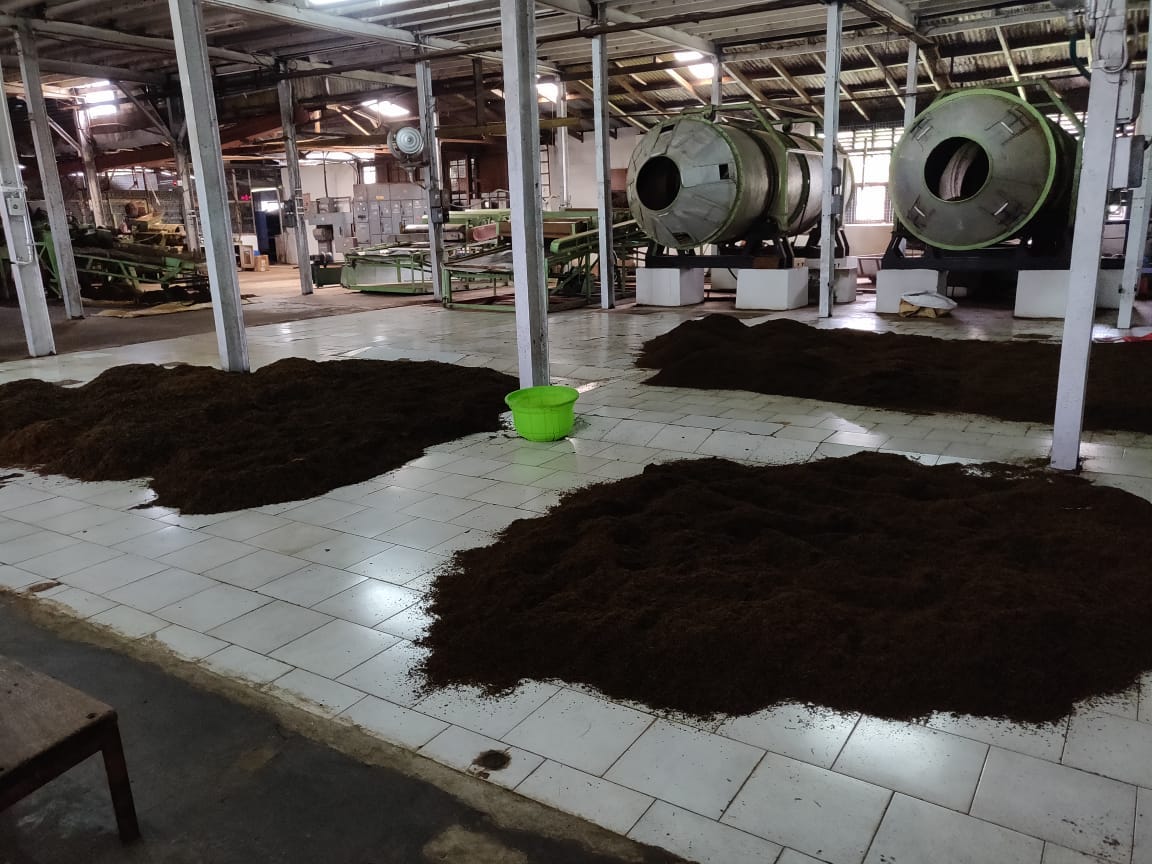
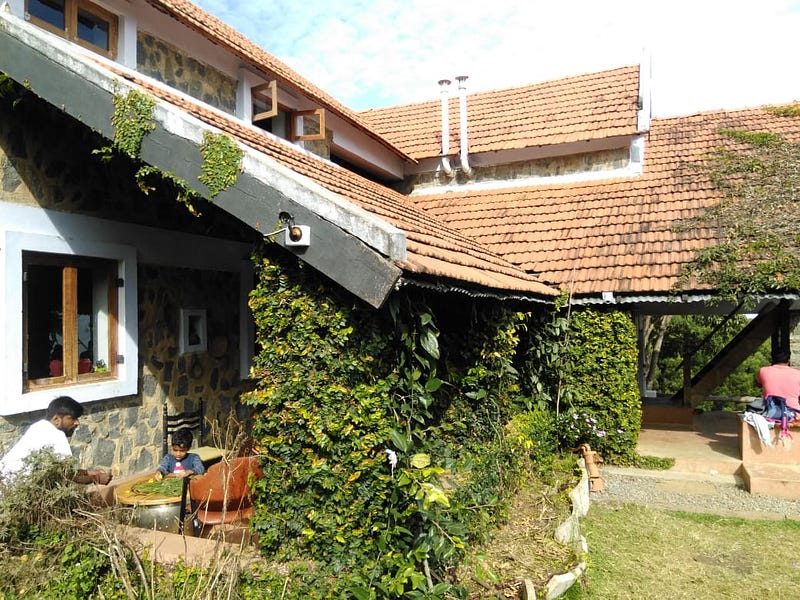
Once we reach ooty, this is where the experiential part of our stay starts. You can finish off the usual suspects “thread garden” “ooty lake” “botanical garden” “yet another Tea factory”, maybe shop a little, and after your done with the commercial part of the trip, find a homestay somewhere in the outskirts of Ooty like the one we stayed. You need to park the vehicle some half a kilometre from the cottage. It may sound a lot of distance, but the surroundings make you forget the distance, there is a old cottage on the way, which is not functional. Bison’s visit the property for grazing, we saw one even before we started our stay, so that was a good sign. The forest is mostly of lantena plants, eucalyptus trees, Gum, wattel trees, Tea gardens, the agave plant, Silver Oak, pine trees and many varieties. The cottage is made of stone masonry, with slopped mud tiled roofs, no paint required outside as most of the walls and pillars are covered with green and flowery creepers. For furnitures, wood from the local forest is used, along with coir cushions. Wooden staircases take you to the upper rooms. The interior are very clean, bright, wooden, with modern accessories. Some of the rooms have a great view, some have an ordinary view, but anyways you would not feel to stay inside while you are here. There is a big kitchen and some attached rooms where the staff cooks and sleeps. They serve good dishes as part of there food package and there is sweet included. The vegetables are mostly grown in there own farm. Spring onions were almost ready to be harvested, other sections had carrots, radish, turnips. There is little cell phone network and nil internet connectivity, so they have provided a small library to keep you engaged. We setup a campfire in front of the cottage, facing the huge open space, where we spotted a sambar dear. They wander into the farm space at night and you can spot them from there shiny eyes. After warming up near the camp fire and having dinner, we tried out few star gazing and photography excercises on the Mobile camera apps. Our cottage looked like James Bonds ancestral home “Skyfall” after twilight. The staff briefed us about the next days routine and plan at the end of the day.
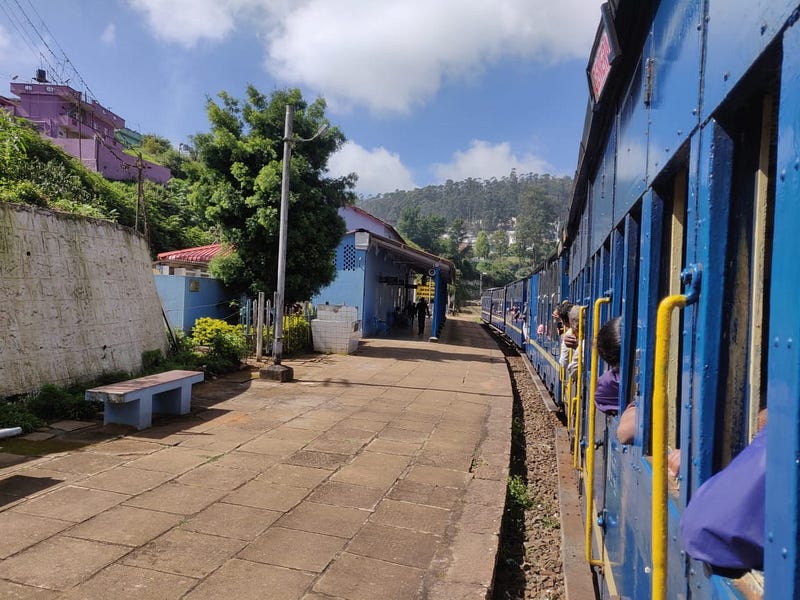
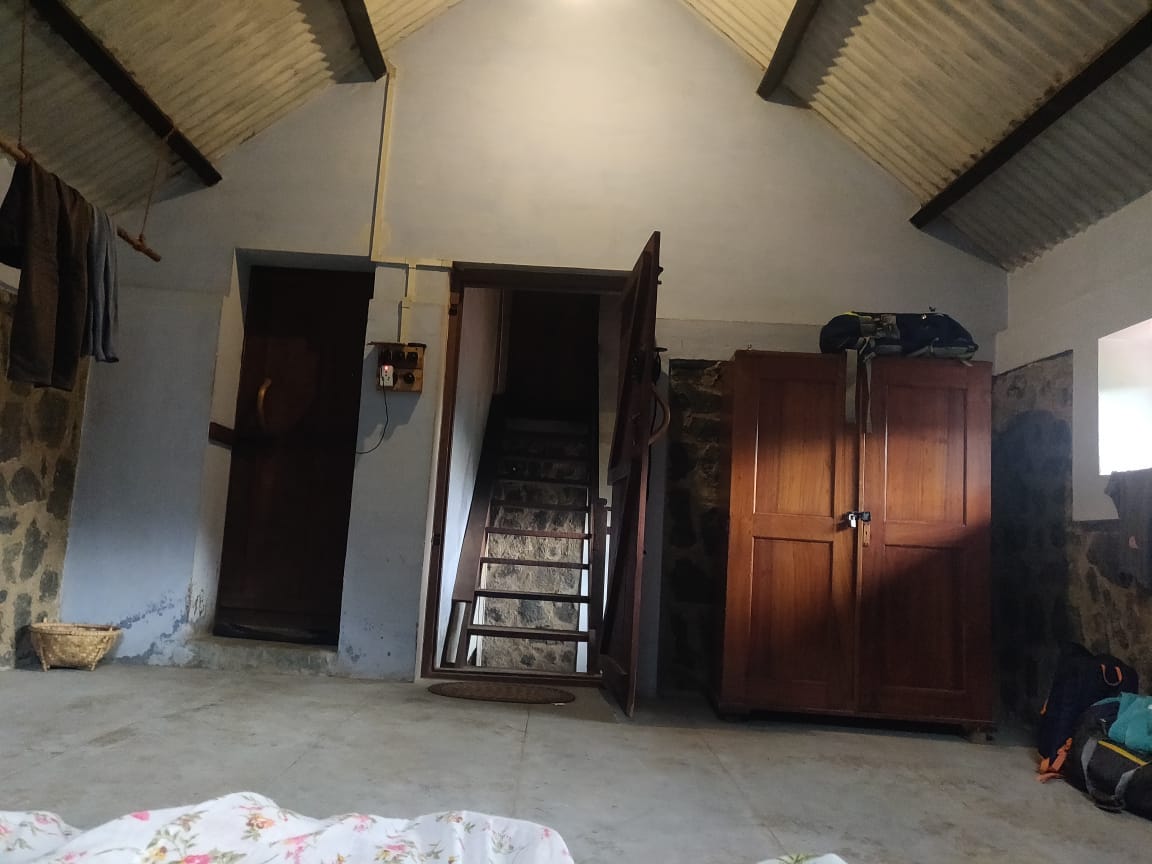
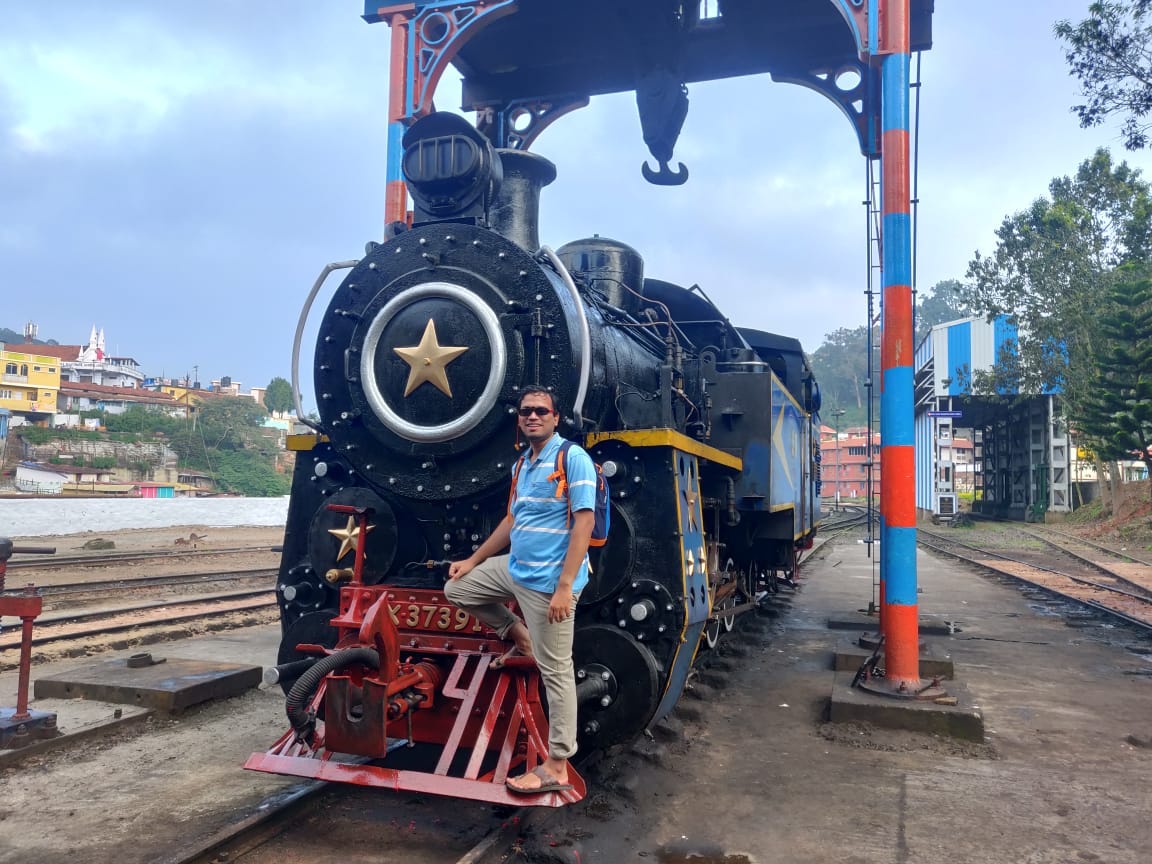
By early morning everyone was awake, and to everyone’s surprise, we saw a pair of elephants, on the hill in front of the cottage. One had a brown tinge from the dust it was constantly blowing on its body using its trunk. There were boulders around but it was astonishing to see wild elephants climb them at ease to cross through the valley. We ate light breakfast and started for a mountain walk near the estate. The trail was through the same forest we came in but forked towards a hill temple upwards. There is a small water source which local people claim has healing properties, our guide demonstrated the method to fill our bottles with the technique to remove any particulate impurities from the source. You dip the bottle straight down and the bubbles eject the particulates and only water enters. There was a point where the path on the hill opened up towards a motor-able road down below, and clouds which were floating by just seemed to stop and move up and pushed down by some phenomemon. Our guide told that at this spot the land and sea breeze meet which causes the clouds to rise and fall by collision. We moved further up to the highest point on the hill and saw a sambar dear up close, obviously it ran off where it was not visible. Our guide then pointed at the Neel Kurunji Flower plant which blooms once in 12 years. The locals used to measure age using this flowering cycle. The last super bloom happened in 2018 so the next one would be in 2030. We saw a sloth bear, black and quite big. It was wandering around few trees and then again moved out of slight. There at the highest point we had few minutes of silence and contemplation and the thought of not going back just brushed my mind.
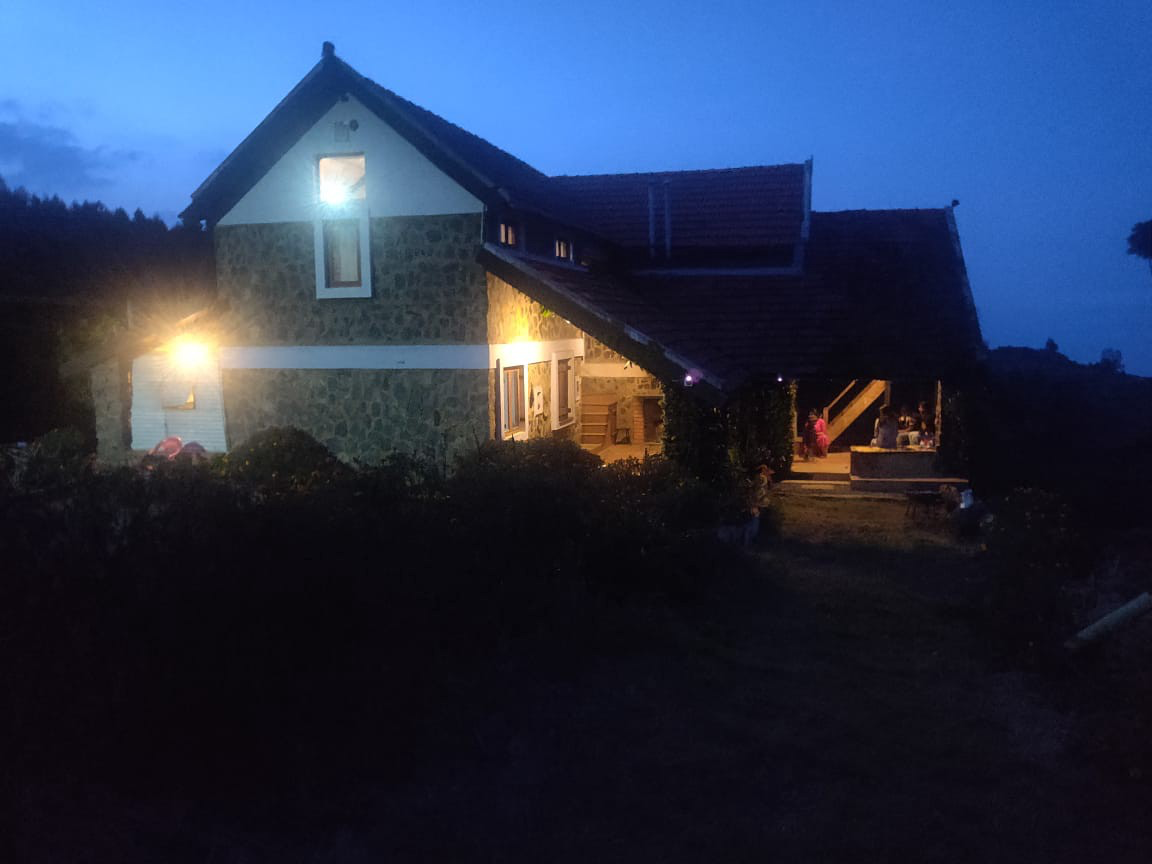
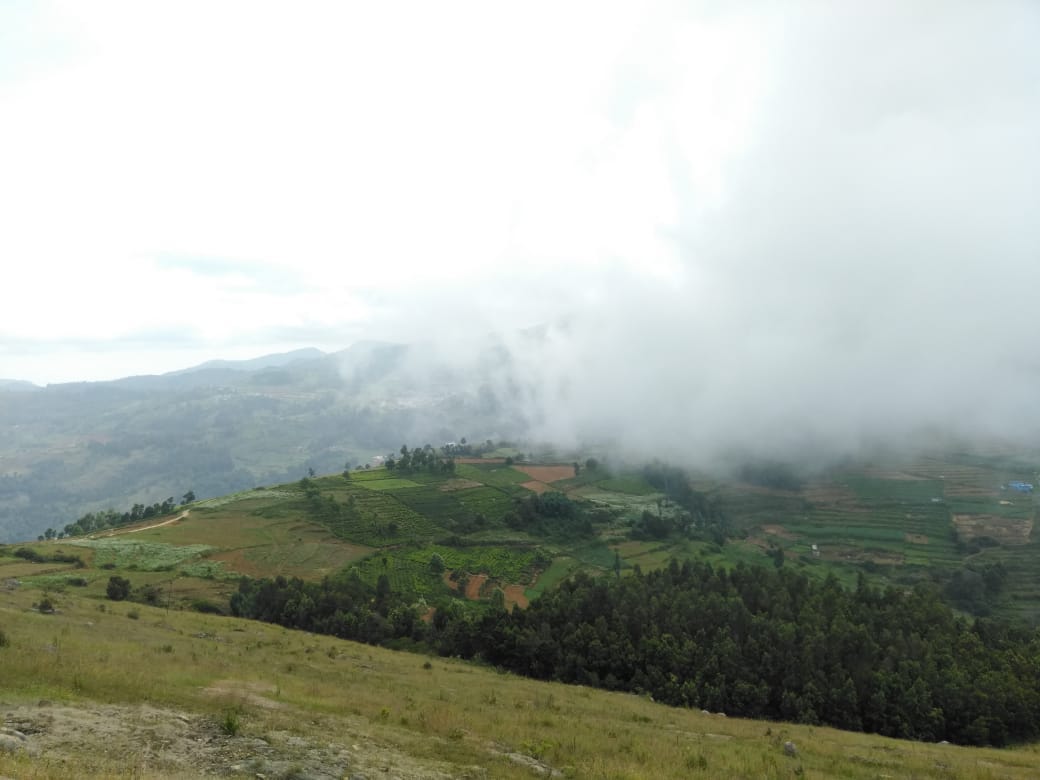
Back at the cottage as it was Christmas, we made a Christmas tree from the leaves of pine looking plants and flowers. The staff provides hot water with eucalyptus leaves boiled in it for disinfecting the skin. I just observed some handicrafts used for interior decorating, those were the toda handicrafts. The Toda’s are the native tribes of Ooty and there settlements are called munds. There were few short story books, some GK, few magazines on architecture and interior. The next day, after having breakfast and last few glimpses of the wild elephants at the nearby hill, we found ourselves browsing through the Outlook Traveler magazine for the next destination.

Your blog is a gem! The simplicity in your writing is a breath of fresh air in the crowded blogosphere. Thank you for making learning enjoyable and straightforward.
ReplyDelete4 star hotel in lumbini